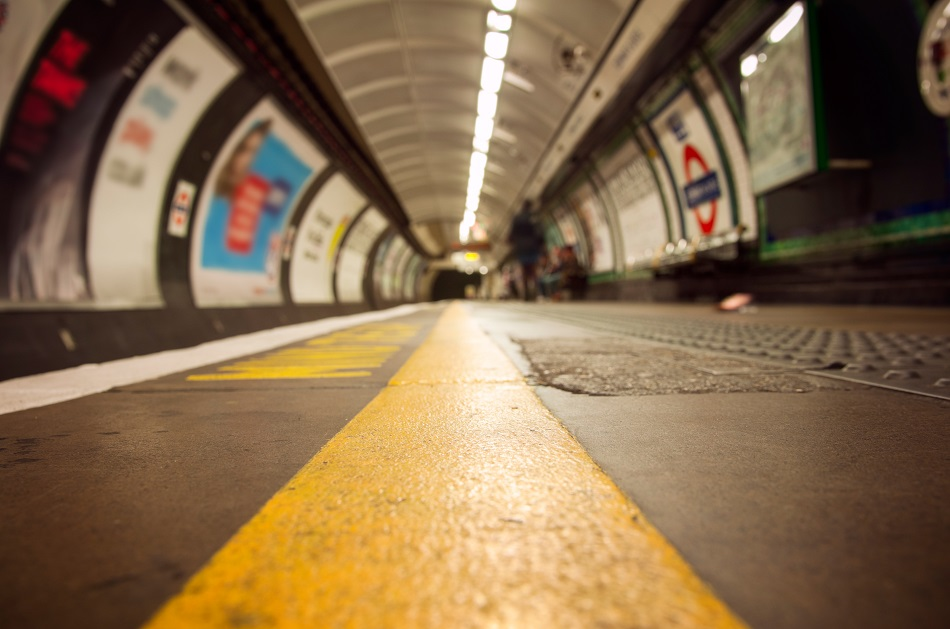Feb 12 2013

Image Credit: Ms_Photo/Shutterstock.com
London's rapid transit railway system is called the London Underground, or commonly known as Tube or the Underground. The Underground covers most of Greater London and some parts of Buckinghamshire, Essex, and Hertfordshire. It opened in 1863, and as of 10th January 2013, the oldest sections of the Underground have completed 150 years of operations and service!
Today, the Underground has become one of the busiest underground railway networks in the world. With c. 408 km of a mix of underground, subsurface railway with the further track above ground, the significant network has been key to the rapid expansion of London.
Designing the London Underground System
Another notable contributor to the Underground’s design was American financier Charles Tyson Yerkes, who was the first person to envision a unification of London’s chaotic underground network as one system.
Frank Pick worked for the Underground Electric Railways Company of London (UERL) and had an eye for design and detail. He was instrumental in giving the Underground its corporate identity by employing the skills of artists and architects to form eye-catching graphic design, commercial art, and modern architecture. The Underground brand has since become one of the most recognized in the world.
Henry Charles Beck (also known as Harry Beck) is an English engineering draftsman who gained popularity when he created the London Underground Tube map in 1931. He created a full system map in color based on topology rather than geography, thus making it user-friendly.
In 1916, Edward Johnston designed the sans-serif Johnston typeface font for the London Underground, which is still in use today.
The Underground is not just renowned because of the physical design – its typography, cartography, and architecture are all iconic design features. By 1934, the Underground was serving 410 million passengers a year and even today, it is a fantastic feat of engineering.
Structure of the London Underground System
The Underground comprises of 11 lines. These lines are divided into sub-surface routes and deep-tube routes. The District, Circle, Hammersmith & City, and Metropolitan lines form the subsurface class, while the Bakerloo, Jubilee, Piccadilly, Central, Northern, Victoria, and Waterloo & City lines form the deep-tube routes. A newly renovated line forms the 12th line - the London Overground. The Underground serves 270 stations by rail.
Aesthetic Components of the London Underground System
‘Art on the Underground’- the aim of this program by Transport for London (TfL), a government body for the transport system in Greater London, promotes world-class art for a world-class tube. Art and design have become integrated into the identity of the Underground. The group has worked towards enriching the Tube environment and the customers’ journey by exposing them to contemporary art from a range of international artists.
Construction of the London Underground System
Two major types of tunnels can be found on the London Underground:
- Cut and Cover lines – The cut and cover method requires digging a deep cutting along the path of a road. This was disruptive because many properties on the surface were demolished. The railway was then laid in the dug-out area and then the rest of the area was covered up with the road being re-laid above. These underground railways started as an extension to the existing outlying railways. As the first trains were steam-hauled, the tunnels had to have effective ventilation to the surface. Ventilation shafts were placed at various points on the route to allow the engines to expel steam and provide fresh air into the tunnels.
-
Deep level tunnel lines - James Henry Greathead devised a new method of tunneling that employed compressed air to prevent leaking in conjunction with a circular drilling shield to bore circular tunnels (about 3m in diameter) much deeper into the ground. The tunnels were then lined with cast iron rings. This method revolutionized how tunnels are made. Brunell's Thames Tunnel, which is used today by the East London Line, was the first successful tunnel under the Thames although its construction was very expensive and difficult.
With these advances in the use of tunneling shields, electric traction, and deep-level tunnel, railways could be built deeper underground, thereby minimizing disruption to life on the surface. Using the new technology, the City & South London Railway, which is now a part of the Northern Line, was opened in 1890. It was the world’s first deep-level electrically operated railway.
Interesting Facts about the London Underground System
The London Underground System is not just renowned for its efficiency, its long history, or its popular design. Other interesting facts about the Underground are set out below:
- Less than 50% of the Underground is underground.
- The busiest station served by London Underground is Victoria, with 79.36 million passengers using the station in 2017.
- Baker Street station was the world’s first underground railway.
- The busiest line on the Underground is the District Line, carrying over 208 million passengers per year over its 40 miles length in 2017/18.
- The highest point reached by London Underground trains is at Amersham on the Metropolitan Line at about 500 ft above sea level.
- The longest single journey on one London Underground train is the 54.5 km trip between West Ruislip and Epping, on the Central Line.
- The London Underground’s first escalator was introduced at Earls Court station in 1911.
- The phrase “MIND THE GAP” (a warning to train passengers to be careful while crossing the gap between the train door and the station platform) originated on the Northern line in 1968.
- West Ashfield Tube Station does not appear on the Tube Map. It is a fully fitted out fake tube station built by London Underground on the 3rd floor of an office block in West Kensington. It is used to teach new employees the intricacies of the system.
- Today, more than 1.35 billion passengers a year use the Underground.
Sources and Further Reading
This article was updated on 7th February, 2020.